Plume
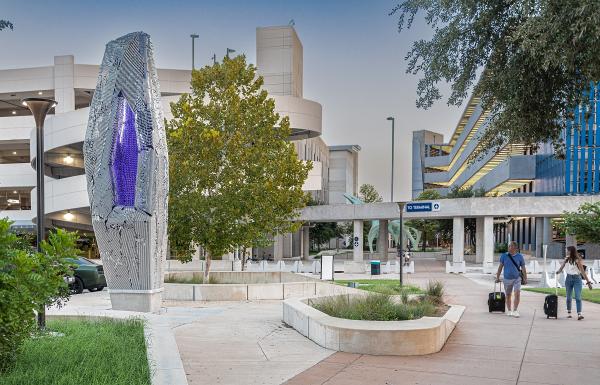
Plume is a permanent public art project at the Austin-Bergstrom International Airport that was commissioned by the City of Austin as part of its Cultural Arts Division’s Art in Public Places program. The work challenges perceptions and preconceptions, activates its surrounding context, and serves as a defining element for pedestrians traveling from the long-term parking lot to the airport. The artwork embodies the essence of Austin while symbolizing the complex and intricate systems that support modern air travel. As both a way-finding device and reference for the broader context of Austin, the project acts—much like the airport—as a connector of both near and far.
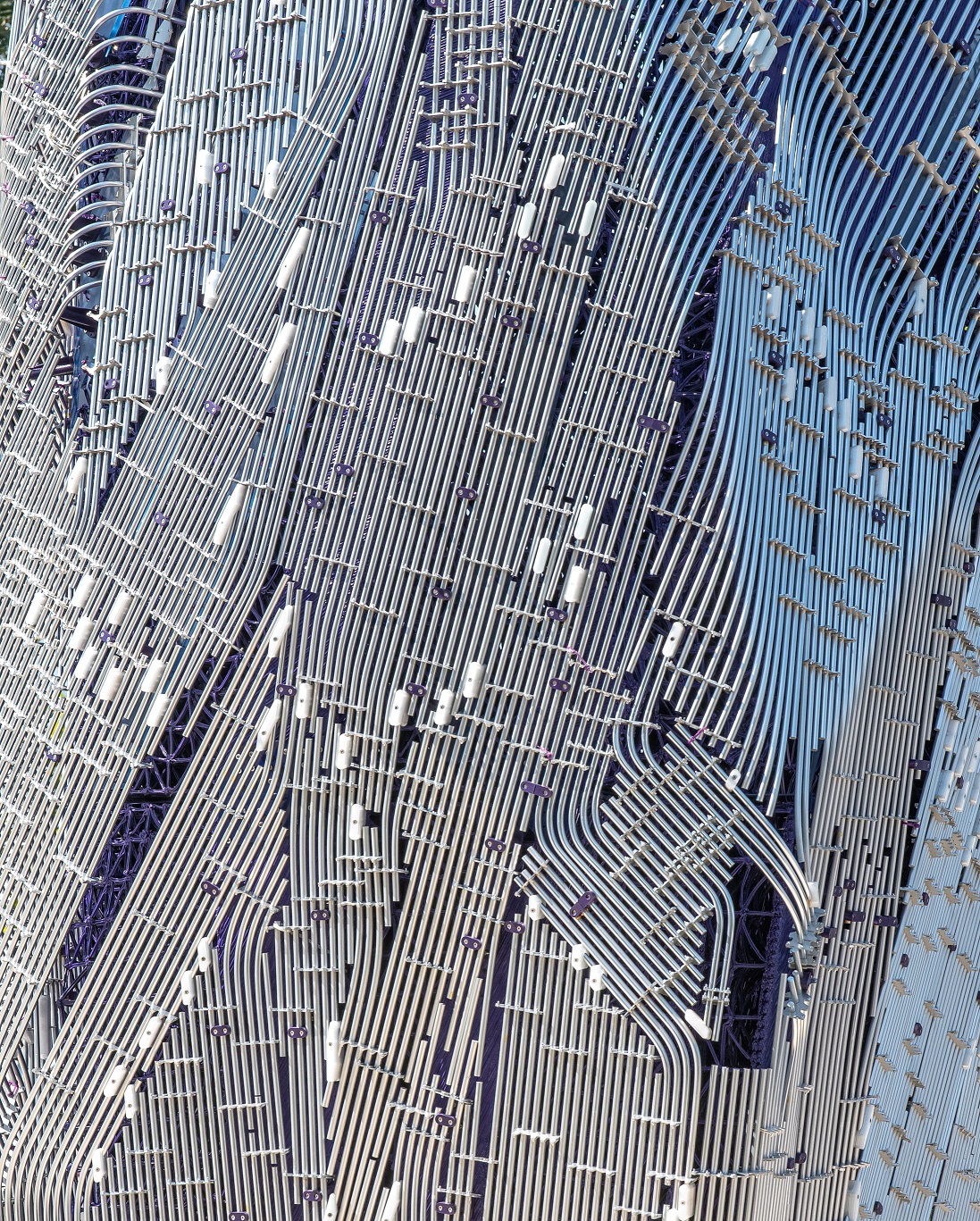
The project takes its form as a contemporary reinterpretation of the ancient obelisk. Using advanced design processes and a range of fabrication tools, Plume was designed as a modern monument coded with narrative and performance. Its dynamic appearance—like the changing iridescence and fillagree of a grackle’s feathers or the elusive, dissipating cloud of a jet contrail—offers a unique view from every angle—sometimes appearing solid and textured, other times intricately layered and porous. As visitors approach, the solidity of the obelisk dissolves into lines of movement traversing the surface, punctuated by clusters of perpendicular brackets like planes on a flight path. Glimmers of the purple interior reflect against the exterior aluminum rods. At night, interior LED lighting causes the 3D-printed interior to glow while the complex pattern of the exterior fades. Through its form, material, and pattern, Plume captures the essence of Austin’s slogan, “Keep Austin Weird,” by engaging the need for a lasting monument to its contemporary moment while embracing the impermanence and complexity of the systems of travel it represents.
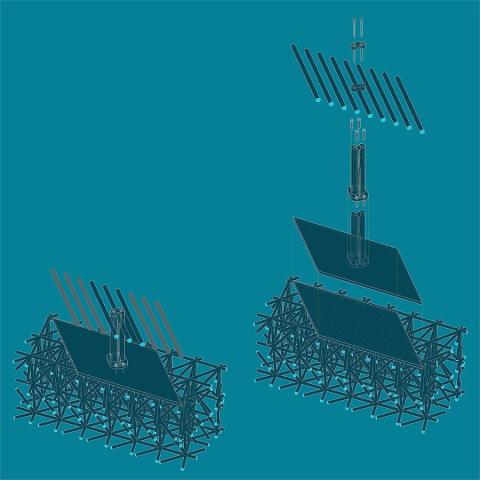
Fabrication and assembly of the project involved a combination of digital and analog methods, defining the work's formal and experiential agenda, while contributing to the project’s aesthetic qualities across different scales. Plume is constructed from a combination of materials and techniques. Its interior features a robotically 3D-printed structural matrix painted with an iridescent purple. This matrix is wrapped with an exterior surface made from more than five thousand linear feet of 3/8-inch-diameter cold-bent aluminum rods composed into a series of panels supported by custom laser-cut aluminum brackets. The brackets also determine the rods’ spacing, allowing them to seamlessly merge from one panel to the next. The panels are finished with varying levels of matte and reflective anodized coatings. The finish and the circular section of each rod, working together with the larger panel bends, combine to form an outer surface that mirrors and distorts its environmental and programmatic context. The effect varies dynamically as one moves around the structure; the reflection of the exterior blends with the interior around the circular cross-section of each rod, creating an oscillating effect that blurs interior and exterior, form and context. Although impossible to simulate the effect precisely, the design of the complex inner and outer assemblies was intentionally executed based on a detailed and accurate 3D model and a series of at-scale physical prototypes.
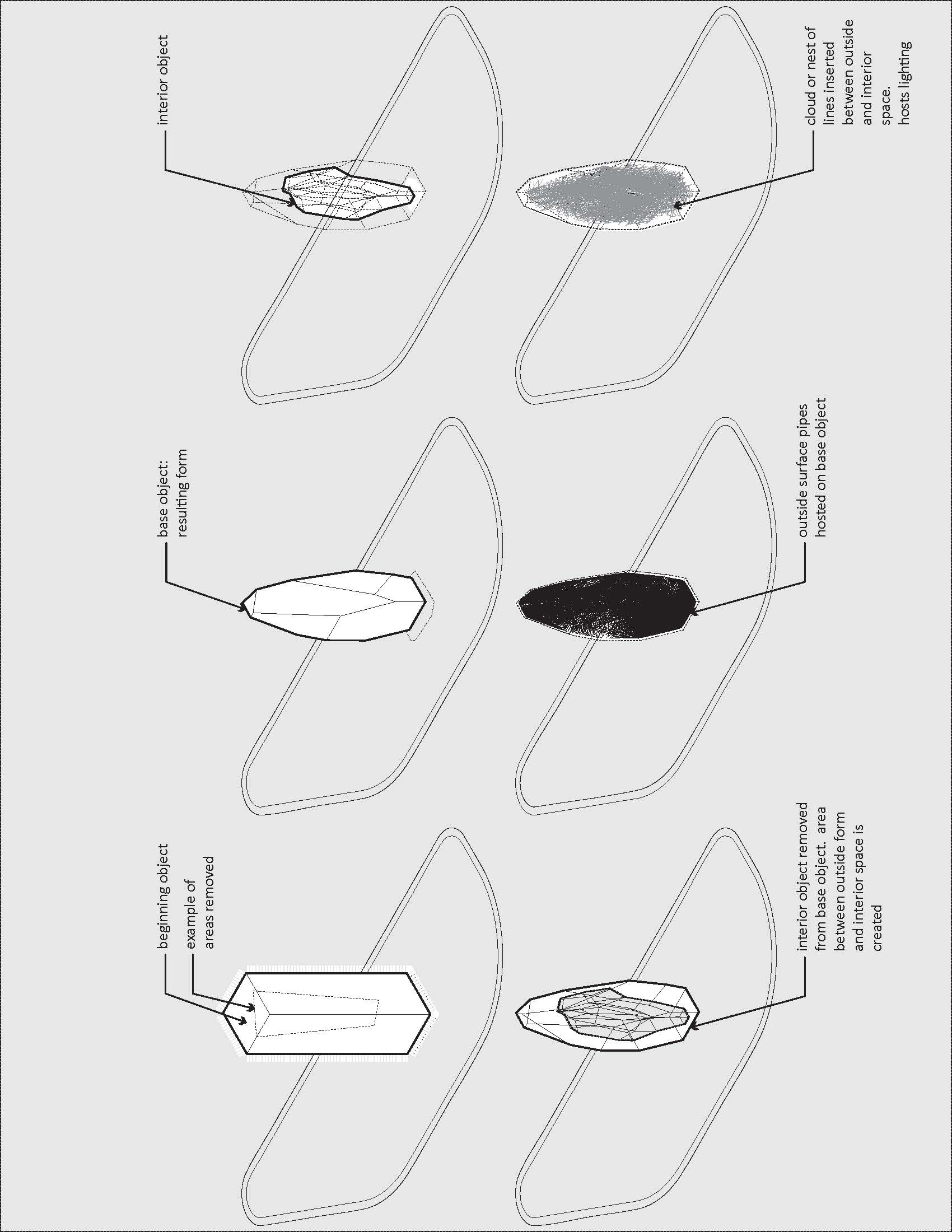
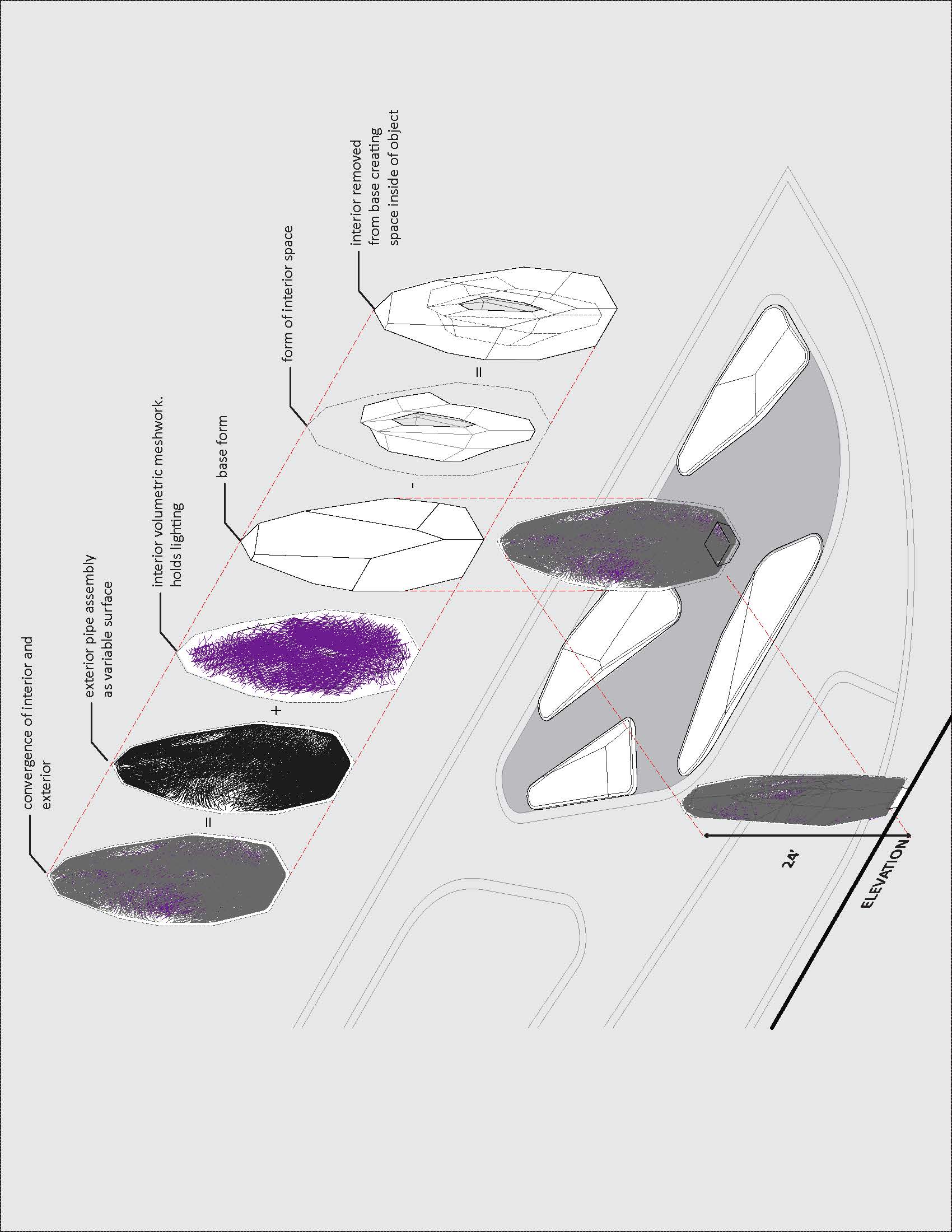
The design of Plume relied on a parametric 3D model that accounted for every part to ensure seamless integration and adherence to precise tolerances. Given the complexity of the assembly, it was crucial to have a detailed digital model with complete fabrication and assembly information so that the entire project could be updated and coordinated with even the smallest change to an individual part. While certain elements were standardized, hundreds of unique 3D-printed parts were utilized to connect larger panel assemblies to the core. Coordinating multiple technologies and fabrication methods was essential to the project’s success.
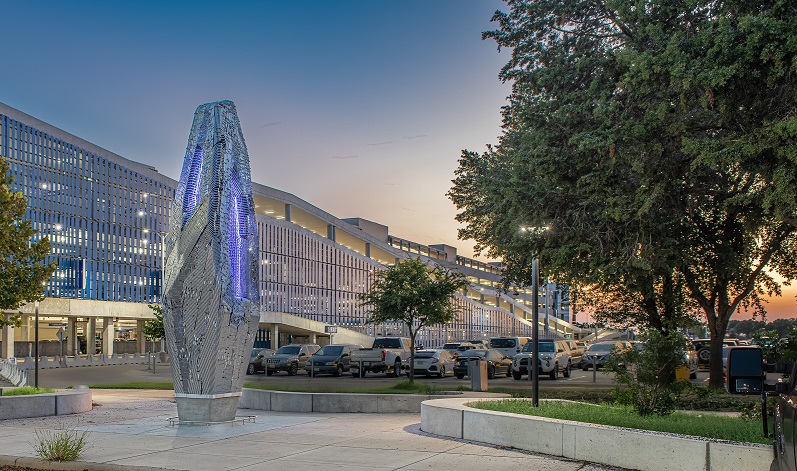
Plume is an original work owned and commissioned by the City of Austin and designed by Kory Bieg and Clay Odom. Photos by Philip Rogers.

